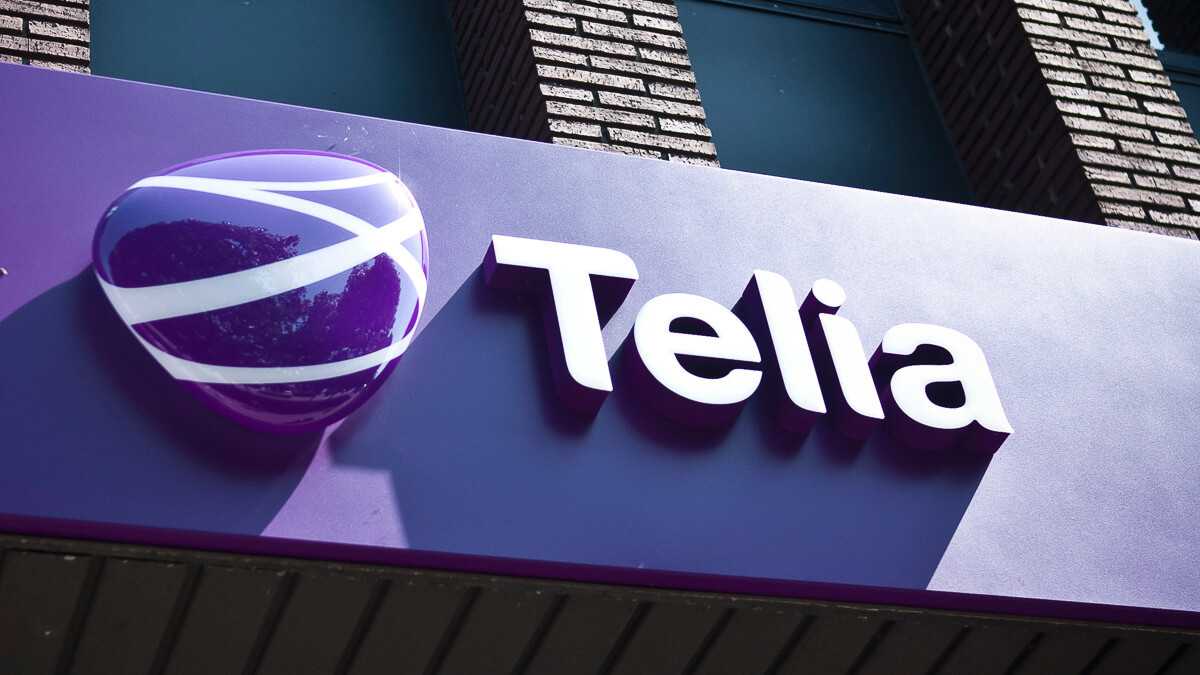
Telia of Sweden announced that it will deepen its relationship with the US software company ServiceNow, which has become a key player in the operator’s search for lower operating expenses.
Telia has used the workflow developed by ServiceNow to improve customer service, but now the Nordic Telecom Group?? does business in Sweden, Finland, Norway, Denmark, Lithuania, Latvia and Estonia? U.S. suppliers’ expertise in service assurance is being used.
“We have moved from a direct commercial agreement with ServiceNow to a strategic partnership,” Telia Group Chief Operating Officer Rainer Deutschmann added in an interview with Light Reading.
(Source: Håkan Dahlström on Flickr CC2.0)
This means that Telia and ServiceNow are now working as partners in the service assurance process to increase the level of automation.
It represents another step forward for ServiceNow in the field of telecommunications, even though Telia is not what the American company calls a “design partner”. Currently, only British Telecom and Deutsche Telekom have design partnerships with ServiceNow, respectively in terms of “e-bonding” and customer order management.
“We also released a new product called Telecom Service Management, used by Telia, which extends our customer service capabilities to telecom-specific functions,” added Chris Bauschka, ServiceNow Telecom Director.
“Then Telia is upgrading its care experience to the telecom-specific care products we own.”
Too many partners
According to a plan announced by Telia CEO Allison Kirkby in January, the goal is to cut the operating costs of the entire group by 2 billion Swedish kronor (230 million US dollars) in the next few years, and 4 billion Swedish kronor (460 million US dollars) by 2025. Dollar).
A lot of savings? ? About 750 million Swedish kronor (86 million US dollars)? ? Expected to come from IT transformation.
ServiceNow seems to be given one of the main roles to achieve this goal.
“We had too many partners in the past,” Deutschmann admitted, and emphasized what he called the “cruel integration” of Telia system integration suppliers from 28 to 4 (Accenture, Capgemini, TCS and TietoEVRY).
In addition, 75 legacy systems have been decommissioned this year, and “hundreds more” are in the line of fire.
Just the ticket
Smarter handling of alarms that sometimes arrive in “storms” is one of Deutschmann’s ServiceNow attractions. By integrating IT and network systems, and replacing manual processes with built-in automation, better business results are expected.
“New things. This is why we have established a strategic partnership with ServiceNow to develop a roadmap for the future. Is it possible to correlate complaints? On the network side,” the chief operating officer said.
“Then I can go back and find the root cause of the problem.”
Another promising service assurance feature of ServiceNow is to filter and aggregate large numbers of alerts in an intelligent way to quickly achieve popular correlations.
“We proved to Telia that we can handle its peak volume [of events],” Bauschka said.
Telia has started to integrate its ticketing system, but Deutschmann acknowledges service guarantee and scheduling?? Which ticketing is only part of it? ? It will always be a work in progress.
Reflecting on the work required for IT transformation and digitalization, Deutschmann regards “constant change as the new normal” and hopes that partners will continue to promote improvements.
However, the benefits of improved service go beyond more cost efficiency from more automation.
Deutschmann believes that companies provide a single and “end-to-end” view of all services and are capable of proactive customer service? Resolve the problem before it affects the end user? ? As a USP that can retain customers and attract new customers.
The first full implementation of ServiceNow is expected to be completed in December.
Local, not public cloud
Unlike ServiceNow, which usually uses a public cloud SaaS model to interact with partners, Telia has been deployed locally by country/region.
“Our strategy is cloud first, but cloud first does not necessarily mean public cloud,” Deutschmann said.
“If I can go to the public cloud, I will, but if regulation prevents me from doing so, I will go to my own cloud.”
Deutschmann said that due to the mixture of national autonomous regulations, security requirements, and specific customer requirements in the countries where Telia operates, ServiceNow instances are placed in the operator’s private cloud environment.
By “copying and pasting” the platform in each country/region without any code deviations, and using the open ServiceNow API, Deutschmann still sees the advantages of the local model.
He said: “You have to be prepared for the future and be resilient, so when certain regulations change, it will not completely collapse, and private clouds provide this.”
Deutschmann believes that the local economy is not far from the public cloud. He added that there are “great tools” that can be used to keep the DevOps model up and running.
Although Telia currently does not plan to run operations and maintenance (O&M) systems in the public cloud, Deutschmann stated that it is “prepared to reconsider as legal, security, and business conditions permit.”
related articles:
?? Ken Wieland, Contributing Editor, Light Reading Contributing Editor
#Telia #ServiceNow #achieve #local #service #assurance
More from Source